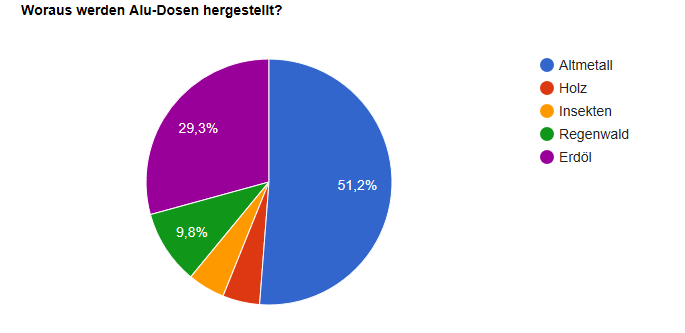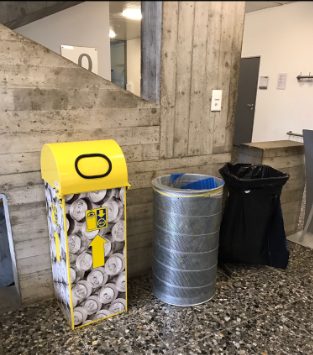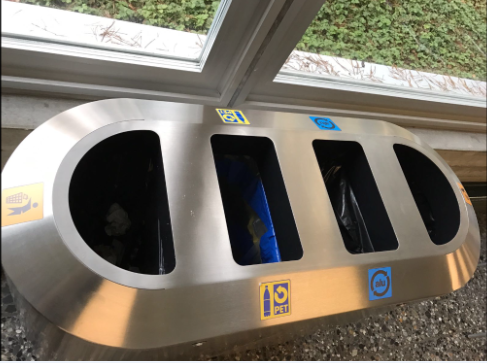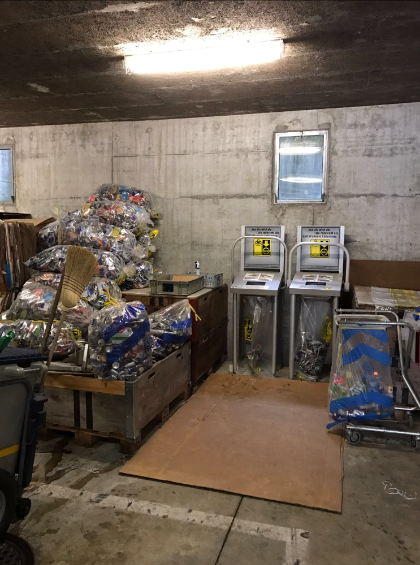We use alu cans almost every day and only a few people really know how alu cans are made and how much energy is needed to produce such a daily product. We’ll show you in the following post all the details you have to know about aluminum.
Get the birth
The raw material (=Rohmaterial) bauxite is recovered from the ground all around the equator (=Äquator) belt like in Australia, Guinea, Jamaica, Brazil and Venezuela. A few meters under the ground, there is the bauxite that is needed to make aluminium-powder used for the production of the can. You need 4 tons of bauxite for one tonne of aluminum.
The energy waste for the production of only one kilo aluminum is about 186 MJ, which equals 51.66 kWh!
!!That’s the same energy as watching about 100 hours of TV!!
Get the way
We were in contact with the Coca-Cola company in Dietikon and they showed us where they get their aluminum-can resources. They work with the Ball-Corporation, which produces the Alucans and it’s process. They have factories (=Fabriken) all over the world and in order to be close to their customers. Sustainability (=Nachhaltigkeit) is an important point for them. The Ball- Corporation converted more than 1 million metric tonnes of aluminum in 2015, primarily from beverage, aerosol and food can manufacturing (=Herstellung). While aluminum offers many outstanding sustainability advantages, it also causes some negative environmental (=Umwelt) and social impacts. For example, it also causes greenhouse gas emissions. But if you recycle the can, you can reduce these emissions.
The Ball-Corporation uses less energy every year and started to use renewable energy from wind and thermal energy. Nearly 75% of all aluminum and more than 80% of all steel (=Stahl) ever produced is still in use today. In just 60 days, cans can be recycled and returned to a store shelf as a new can.
Get the end
The aluminum cans are pressed into big blocks, after that the aluminum blocks are melted at 800 degrees (The melt point is at 660 degrees), the melted aluminum is poured into kelps (Barrenformen) and then milled (walzen) into thin sheets. Only 1/3 of all aluminum is recycled in the whole world.
Recycling in our school in Wetzikon
Our school is engaged in recycling. There is a recycling point on every floor and we asked ourselves what happens to the aluminum cans we throw in those containers so we got in touch with the janitor (=Hausmeister) and he gave us a lot of information.
Where do all the cans go?’ We asked.
We’re collecting the cans in our basement and afterwards the cans are going to the Keller Recycling AG in Hinwil, but the plastic bags are bought from the Igora AG (=the biggest recycling institution in Switzerland)
How much money do they get for a kilo of aluminum?’
Per 1 kilo pressed aluminum cans they are earning CHF 1.30 which equals USD 1.28
How many cans are collected per year?
In 2014 the school collected about 448 kg (=USD 573.44) and in the year 2015 804 kg (=USD 1’029.12)
Aluminum recycling in Switzerland
The need of aluminum in Switzerland is 23.3 kg per head. 88% of our bought Aluminum cans find their way to a recycling centre. In Switzerland almost every village has a collecting point for aluminum cans, a lot of train stations, in Zürich city in every corner and in almost every mall or grocery store. A lot of the collecting points collect conserving cans (=Konserven) also, or you can make an agreement with those companies and they will come to your address and take your empty cans with them for free. Switzerland does not have a recycling point so we have to send our collected cans abroad. The financing of the recycling is solved by the Igora AG. They get 2 cents per Aluminum can, this amount is included in the price of the beverage can.
In the year 2014 Switzerland collected 4’200 tonnes of aluminum, 88% of it are only cans.
Get the Rebirth
Aluminum cans can be recycled endlessly, without losing quality or quantity. The recycling only needs 5% of the energy, that the production of new aluminum needs.
In this statistics, you can see how the recycling rate has become in different countries.
Tips for recycling
- Use washable containers, like Tupperware, for packaging food, and not tinfoil (=Alufolie).
- Don’t use dog and or cat food out of aluminum containers, go to the butcher (=Metzger) and take the meat there.
- Press your aluminum cans, on good frequented places you’ll find a compactor.
- Even dirty cans can be collected without a problem.
- Don’t do extra car drives to dispose the cans, you’ll waste more energy for that than the recycling of the cans.
- If you’re not sure if the product is made of aluminum make the kink (=knick) test, if it goes back to the origin place throw it in the garbage, if the kink stays you can bring it to the collecting point.

Survey
We made a survey about recycling from aluminum cans. It was very fascinating to see the results. The answers showed us, that most of the people do recycling but don’t know how the aluminum is made and where the ingredients come from.
72% of the participants said, that they do recycling.

One question was, “how much energy is used to produce 2 alu cans?” As much energy as an European household with 4 members would use in..
- 1 year
- 1 day
- 1 hour
The right answer is 1 day.
Whereas 57% of the participants know how much energy it needs to produce aluminum-cans.
In the following graphic you see the results of one question which fascinated us the most. We asked the participants, “if they know which material is being used for aluminum” and ONLY 9.8% knew the right answer is from the Jungle-ground!

Sources
Check this Video
Ramela Melezanovic, Esin Akalin & Nada Zdravkovic
reviewed by Sonia Jade Hemmerle & Elaine Suter
☷ See the project teams here »
☵ Some words about the contributions »
☴ Our sponsors and partners » (the-horse.education)





Vielen Dank für eure Arbeit und für die Gelegenheit euch diesbezüglich ein kleines Feedback zu geben.
The energy waste for the production of only one kilo aluminum is about 186 MJ, which equals 51.66 kWh!
Woher habt oder wie kamt ihr zu diesen Werten?
Only 1/3 of all aluminum is recycled in the whole world.
Korrekt; bedingt aber eine Klärung der Aussage… Nur 1/3 wird rezykliert, weil 2/3 des jährlich produzierten Aluminiums in langlebige Produkte, wie Fahrzeuge/Flugzeuge oder Fassadenaluminium eingebaut ist und erst viel später in den Al-Kreislauf gelangt. Aluminium ist zu kostbar um es nicht zu rezyklieren so wird es über die Lebensbetrachtung nahezu zu 100% rezykliert.
…from the Igora AG (=the biggest recycling institution in Switzerland)
IGORA ist Betreiberorganisation für das Recycling von Verpackungen aus Aluminium; nicht zu verwechseln mit einem Altstoffhändler
The need of aluminum in Switzerland is 23.3 kg per head.
Quelle? Inkl. industriell verwendetes Aluminium? Bezüglich Verpackungen aus Aluminium (Aluminium im Haushalt) sind es lediglich gegen 1.5 kg pro Einwohner
88% of our bought Aluminum cans find their way to a recycling centre.
Quelle? Gemäss Bundesamt für Umwelt: 2015 91%, BAFU Abfallstatistiken 2015 (bafu.admin.ch)
Switzerland does not have a recycling point …
Switzerland does not have an Aluminmun remelting plant …
The financing of the recycling is solved by the Igora AG. They get 2 cents per Aluminum can …
1 Rp. pro Stück
In the year 2014 Switzerland collected 4’200 tonnes of aluminum, 88% of it are only cans.
Quellenagabe? Siehe oben (BAFU)
Viel Erfolg mit eurem Projekt, Abschluss und im zukünftigen Berufsleben.
Chris Ruegg
IGORA-Genossenschaft
igora.ch
Hi Nada, Ramela and Esin
Kim and I really liked your post. Everyone should read your post to realize how important recycling is and what it causes. We think that it is very important to explain the meaning of aluminium, the energy waste and the recycling process to the population. We all can contribute to a better earth and recycle our cans. The effort is not as big as it seems when we see what it causes! Thank you for your informative and enlightening post.
Kim and Cécile